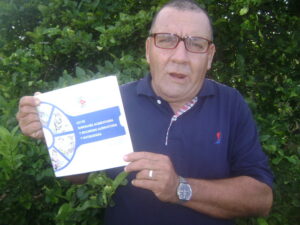This December 1st marks the 70th anniversary of the establishment of the Cuban Broadcaster’s Day, date on which the Moronense broadcaster Jorge Luis Nieto García died prematurely, in 1951, when he was only 33 years old and shining as an excellent program host of RHC Cadena Azul de Cuba, after settling in COCO, only with the childhood experiences obtained in CMJP, station installed in his block of residence, Martí corner of Callejas.
Therefore, the members of the guild remember the 70th anniversary of the first celebration of the Cuban Broadcaster’s Day, while at the dawn of next year the Cuban Capital of Broadcasting province will celebrate the centenary of the installation of the first radio station in the city of Ciego de Avila and, consequently, of the territory.
Morón and Ciego de Avila, especially, are important protagonists of this beautiful profession that concludes 50 years later, with the proclamation of the young province of Avila as Cuban Capital of Broadcasting, an honorary title obtained not by work and grace, but by results, by historical links, by the speaking culture of its children, by the radio presence and the artistic tradition of the medium.
A Camagüeyano was the founder of Cuban radio, musician and composer Luís Casas Romero, on August 22, 1922; Camagüey was the first city in the interior of the country to have a radio station and the venue of the First Congress of Broadcasters held in 1947; Ciego de Avila, the first place in the interior of the Island where a radio signal was heard and one of the first in the nation to organize a Delegation of the National Association of Broadcasters.
It was Jorge Luis Nieto who proposed in the First Congress to create the National Association of Broadcasters and the date of his death was selected as the Day of the Cuban Broadcaster. In addition, it has been scientifically proven that the territory occupied by the current province of Ciego de Avila is the one with the lowest incidence of cultural pseudo-disseminations in the country’s standard, in addition to having, in the first half of the 20th century, seven radio stations, the studio of a national network and repeaters of the main national networks.
Taking into consideration that radio in this territory was born almost in parallel with the emergence of the medium in the island, supported by three early stations, that from the second half of the century there was an impetuous development of radio in La Trocha and that with the arrival of the National Institute of Radio and Television there was a quantitative growth of municipal booths, radio and television stations throughout the territory, we can identify three generations of professionals of the word with unquestionable transcendence that guarantee the professional quality and artistic prestige of more than a hundred speakers from Avila. (Written by Arquímedes Romo Pérez)




